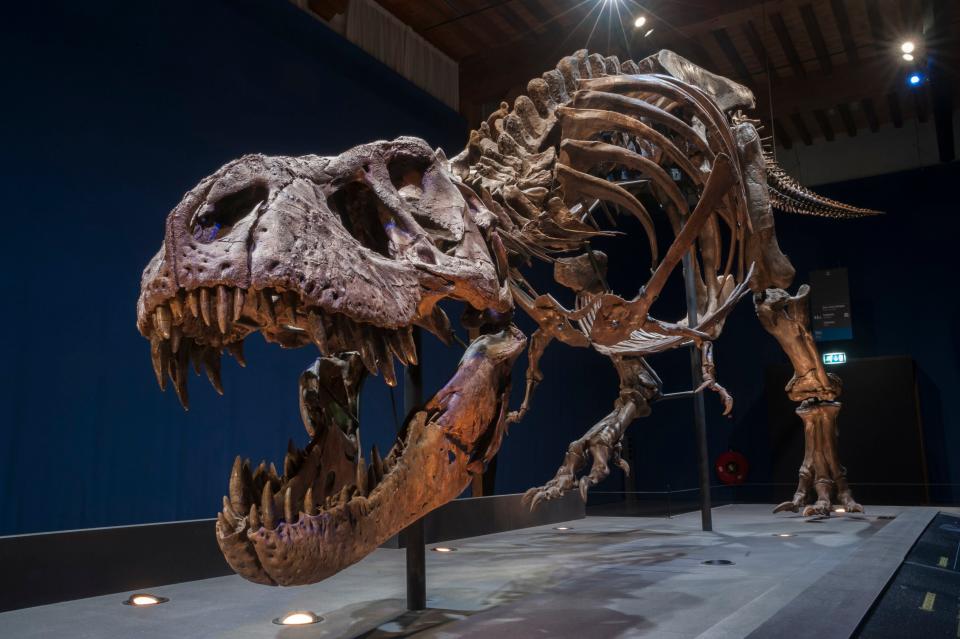T Rex strolled at speeds close to that of humans, say scientists

The mighty Tyrannosaurus Rex may have walked at speeds closer to that of humans, according to a new study which factors in a more accurate estimate of the energy it would have taken the dinosaur to carry around its heavy tail in rhythm with the rest of its body.
In the first-of-its-kind study, Dutch paleontologists calculated the new walking speed of Trix, the tyrannosaur from the Naturalis museum in the Netherlands, by considering the T Rex tail as a suspension bridge.
“You could compare it with a suspension bridge – a suspension bridge with a ton of muscle in it,” said Pasha van Bijlert, who studies movement science at the Vrije Universiteit in Amsterdam (VU).
The idea behind the research, published in the journal Royal Society Open Science, was to determine the preferred walking speed of the T Rex in which the dinosaur used the lowest possible amount of energy to move its heavy tail in sync with the rest of its body.
In the study, the scientists factored in the principle of resonance between body parts when animals move.
“Animals minimise locomotor energy expenditure by selecting gait kinematics tuned to the natural frequencies of relevant body parts,” the scientists wrote in the study.
Citing an example, they said the preferred speed when humans walk is determined by how the different parts of the body, including the hands, resonate as one moves.
According to the researchers, this principle to calculate the preferred speeds, also works for animals that walk on four feet, and for two-legged animals like ostriches.
For the T Rex, they said a more realistic model of the dinosaur’s motion is achieved by factoring in the resonance of the tail.
“These carnivorous dinosaurs didn’t just have two legs, they also had an enormoustail that helped them move around,” the researchers noted in a statement.
To study T Rex motion, the scientists developed a 3D model of the dinosaur using Trix’s skeleton as a reference, adding digital muscles and ligaments to the structure, including to its tail.
Based on their biomechanical calculations, they said the natural frequency and a prefered walking speed of T Rex could have been 4.6 km/h, a number close to that of humans.
“So, when Trix was out on a stroll, she walked at roughly the same speed as you do,” the paleontologists noted.
The researchers said previous studies investigating dinosaur walking speeds looked mostly at the legs and ignored the tails that made dinosaurs unique.
“They usually found much higher walking speeds. The one we calculated is lower, but it’s similar to that of other animals,” Mr van Bijlert added.
Read More
Royal Artillery travel down the Long Walk on horseback ahead of duke's funeral
Earth’s biggest mass extinction happened 10 times faster in oceans than on land, study finds
Richard Dawkins stripped of ‘humanist of the year’ title over trans comments

 Yahoo Finance
Yahoo Finance 